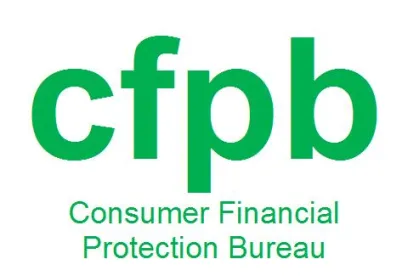Consumer Financial Protection Bureau (CFPB) Director Richard Cordray has responded to the letter from the Department of Education (ED) terminating the Memoranda of Understanding (MOUs) between the agencies. ED’s August 31st letter—signed only by Kathleen Smith of the Office of Postsecondary Education and Dr. A. Wayne Johnson of Federal Student Aid—provided 30 days’ notice of the termination of two MOUs: a 2011 agreement providing collaboration to resolve student loan complaints and a 2014 agreement encouraging coordination of supervisory activities.
Director Cordray’s September 7th letter—addressed directly to Secretary Betsy DeVos—states that ED “appears to misunderstand” the scope of the CFPB’s authority. In particular, Director Cordray asserts that the Higher Education Act does not supersede the federal consumer financial laws that the CFPB enforces under Title X of the Dodd-Frank Act (Dodd-Frank). In addition, Director Cordray emphasizes that Dodd-Frank required the Bureau to establish a consumer complaint unit and gave the Bureau authority with respect to institutions responsible for “servicing loans” and “collecting debt related to any consumer financial product or service.”
However, in advancing these arguments, Director Cordray seems to have conceded that even under his analysis some collecting and servicing of federal student loans could occur outside of the purview of the CFPB. The discussion of servicing and collecting is circumscribed by the CFPB’s apparent admission that institutions collecting and servicing federal student loans are subject to its authority only insofar as they are covered by the “larger participant rules” for debt collectors and student loan servicers. Moreover, Title IV of the Higher Education Act does supersede at least one federal consumer financial law, the Truth in Lending Act, which has no application to loans made, insured, or guaranteed under Title IV.
Cordray’s letter goes on to address other points made by ED. As justification for the split, ED accused the CFPB of “violating the intent” of the agreements by failing to forward Title IV federal student loan complaints within ten days of receipt and handling complaints itself. Director Cordray dismisses this concern by noting that ED had never expressed any concerns about the MOU or the handling of federal student loan complaints prior to its letter and that the CFPB shares its complaint information in “near real-time” by providing ED access through its Government Portal. Director Cordray also cites to Section 1035 of Dodd Frank, which provides that the CFPB student loan ombudsman is to establish an MOU with the ED student loan ombudsman to “ensure coordination in providing assistance to and serving borrowers seeking to resolve complaints related to their private education or Federal student loans.”
It’s unlikely that ED will find these arguments persuasive. Director Cordray does not articulate how the CFPB can require ED to constantly monitor the Government Portal as a substitute for the direct forwarding of complaints contemplated by the MOU. He also overlooks the fact that Section 1035 of Dodd Frank can be interpreted to require the CFPB to forward complaints about federal student loans to ED but to coordinate in the limited instance when a complaint addresses conduct affecting both private student loans handled by the CFPB ombudsman and federal student loans handled by the ED ombudsman.
With respect to enforcement coordination, Director Cordray rejects the accusation that the CFPB had overstepped its bounds. He states that “the Bureau has never knowingly taken any actions in conflict with the Department’s regulations or instructions to servicers” and that all of its actions were consistent with ED’s directives. Director Cordray also defends the CFPB’s use of information requests before conducting on-site examinations and maintains that the CFPB took the necessary steps to preserve confidentiality with respect to actions involving student loan servicers.
Again, ED is unlikely to be convinced. The letter makes no mention of any outreach efforts on the part of the CFPB to determine ED’s intentions. More tellingly, the letter does not explain how the CFPB is able to serve as the arbiter of what ED’s regulations, instructions, and directives require. The perfunctory statements about preserving confidentiality are no more compelling.
Director Cordray lauds the Bureau’s complaint handling as providing an “efficient means” to obtain consumer relief, but stops short of saying that ED is incapable of independently handling all federal student loan complaints. He also notes that the CFPB began accepting complaints “without any objections” in February 2016. However, he says nothing that would indicate that the CFPB discussed the expansion of the complaint portal with ED ahead of time. He also fails to provide any insight as to why the Bureau started accepting federal student loan complaints more than four years after signing the MOU.
Ultimately, Director Cordray’s letter serves as an olive branch. The letter requests a “constructive conversation” about future cooperation and notes that the CFPB “stand[s] ready to meet with you or your colleagues, hear your concerns, and explore constructive solutions to help us all better serve students and borrowers.” Director Cordray does not include any explicit incentives for ED’s cooperation and, perhaps as a concession, suggests that the CFPB is willing to negotiate cooperation on a smaller scale or under more restrictive terms. As he states in the letter, the CFPB “stand[s] ready to work toward new MOUs between the Bureau and the Department.”



 />i
/>i

